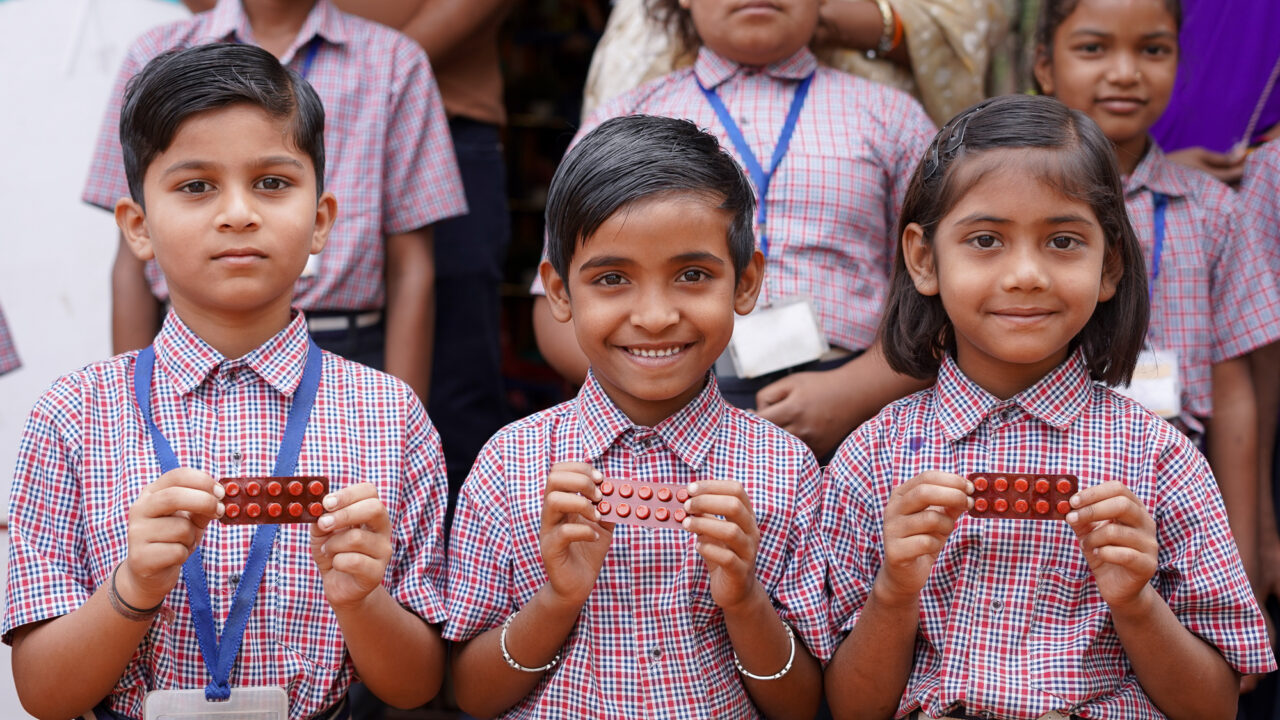There is an interesting on-going discussion around the evidence base for deworming. There is consensus that treating children for intestinal worms is safe and appropriate. The discussion focuses on whether the evidence we have to date, specifically the evidence on education and labor market outcomes, does justify mass treatment programs of the sort supported by our Deworm the World Initiative; that is, programs in which all children in an endemic area are treated, without determining infection status. In this post, we aim to point to some resources that summarize the evidence on this question, provide links to the conversations that inform this discussion, and share why we find deworming to be a sound investment.
The evidence for mass deworming as policy Two strands of rigorous evidence from two extremely different contexts point to the same conclusion: in areas where intestinal worms are prevalent, presumptive mass deworming treatment can increase children’s time in school and, in the long run, improve educational and labor market outcomes. The evidence base stretches from retrospective analysis of deworming in the U.S. South in the early 20th century to field experiments done in East Africa at the turn of the 21st century. The economic returns to deworming appear large enough to justify fully subsidizing treatment (total costs less than $0.50 per child), even without factoring in additional impacts on health and cognition for young children.
At Evidence Action, we mean it when we say that we are committed to working on programs and approaches that have a strong evidence base, and take seriously this ongoing and useful discussion. Based on the registered pre-analysis plan, we look forward to the results of the 3ie-supported replication of the original Kenya study. We also note the protocol of a new review by the Campbell Collaboration, which appears to be a step toward alignment between researchers as it says:
This systematic review aims to build upon previous systematic reviews conducted on soil- transmitted helminth interventions and address the four criticisms raised in response to the Taylor-Robinson et al. review. We will assess: 1) the effects of deworming according to the WHO guidelines (i.e. for both soil-transmitted helminths and schistosomiasis, according to prevalence) as well as synergistic effects of co-interventions (such as micronutrients, feeding, and hygiene and/or sanitation interventions); 2) treatment externalities (spill-over effects) for untreated children living in endemic areas (see above); 3) the effects on school attendance and participation in light of validity of different measures of attendance, and 4) the effects on cognition, taking into account the learning environment, contextualized in areas of poverty and under- nutrition. Long-term effects on weight, height, education and labour market outcomes will be taken into account by including non-randomised studies.
Below, we summarize briefly the research that underpins our current commitment to mass school-based deworming as an education intervention.
School participation
- Bleakley’s study of a deworming campaign in the U.S. South in the 1910s estimated that an infected child would have been 20 percentage points less likely to be enrolled in school than a non-infected child, and was also 13 percentage points less likely to be literate.
- Miguel and Kremer’s experimental evaluation in Western Kenya found a 25% reduction in student absenteeism at treatment schools.
- Baird and colleagues’ long-run study based on the Western Kenya deworming finds that among females, deworming increased the rate of passing the national primary school exit exam by 9.5 percentage points on a base of 41%.
Future earnings
- Hookworm infections could have explained as much as 22% of the income gap between the U.S. North and South.
- In Kenya, men who were treated as children worked 3.4 more hours per week, spent more time in entrepreneurial activities, and were more likely to work in higher-wage manufacturing jobs. This long-term impact study in Kenya calculates a rate of return for governments who invest in deworming of 32-52%.
Cognition and nutrition
- A great deal of our deworming work is in India, where we support a government-led program that provides iron supplementation in addition to deworming. A randomized health intervention that provided iron, Vitamin A and deworming drugs to Indian preschool children in the slums of Delhi found a significant gain in child weight and school participation compared to intervention with Vitamin A alone. Absenteeism was reduced by one-fifth in the treatment group. We do note, however, that the large DEVTA trial found no impacts of deworming or Vitamin A supplementation on mortality in a rural area where worm loads were light. We prioritize, and urge our government partners to prioritize, investment in areas where worm loads are high.
- Owen Ozier’s study on the long-term effects of early childhood deworming suggests that reduced exposure to worm infections may improve cognition for children less than one year of age. These young children in the catchment area of treatment schools showed large gains on cognitive tests about ten years later.
- A randomized controlled trial in Uganda (Alderman and colleagues, 2006), less well known than the Kenya trial, perhaps, but similar in many ways, finds that the provision of periodic anthelmintic treatment as a part of child health services resulted in an increase in weight gain of about 10% above expected weight gain when treatments were given twice a year, and an increase of 5% when the treatment was given annually.
- Chronic infections in childhood (from diarrhea, to malaria, to worms) generate inflammatory (immune defense) responses lead substantial energy to be diverted from growth. There are interaction effects too, with deworming, for example, making it easier to fight off malaria.
- More generally, in their summary of deworming, the WHO points to several channels by which worms may impair nutrition, and note several studies that can support these claims.
Mass treatment vs. screening? Back to the question posed at the beginning: is mass treatment justified? On cost-effectiveness grounds we believe that it clearly is, as the cost of treatment is cheaper than individual screening. The WHO states that the cost of screening is four to 10 times that of the treatment itself, and because the drugs are very safe, taking the medicine has no side effects for the uninfected, the WHO does not recommend individual screening. The WHO instead recommends mass drug administration in areas where more than 20% of children are infected. We have found that deworming through schools provides the greatest opportunity to reach the entire at-risk population while minimizing costs through the use of existing government infrastructure.
When do we know enough to act? Evidence-based investment and programming is an iterative process. Research is not only completed prior to programming, but continues during pilot, implementation, and scale-up mode. In the case of deworming, we believe that the evidence base is such that we can work toward scale, as we continue to learn more. We welcome future guidance from research to make our programming more effective and cost effective.
Mass treatment vs. screening? Back to the question posed at the beginning: is mass treatment justified? On cost-effectiveness grounds we believe that it clearly is, as the cost of treatment is cheaper than individual screening. The WHO states that the cost of screening is four to 10 times that of the treatment itself, and because the drugs are very safe, taking the medicine has no side effects for the uninfected, the WHO does not recommend individual screening. The WHO instead recommends mass drug administration in areas where more than 20% of children are infected. We have found that deworming through schools provides the greatest opportunity to reach the entire at-risk population while minimizing costs through the use of existing government infrastructure.



